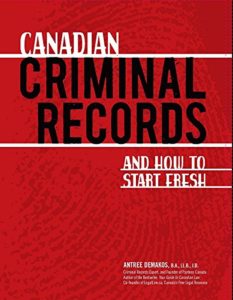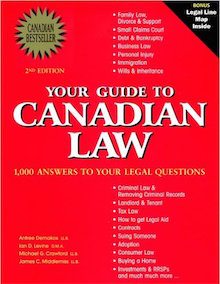Travel is one of the elements of modern, 21st-century Canadian living that can be very productive both personally and professionally. It’s an aspect of life that can be advantageous for one very big reason: the United States.
While both countries enjoy some of the highest standards of living in the world, as well as democratic governments that are the envy of many other nations, it is the United States that boasts a much larger population, and more financial, cultural, technological, industrial, and professional clout. Places like Manhattan in New York and Hollywood in Los Angeles have become synonymous with glamour, power, wealth, and opportunity for the entire world.
So, it’s no real surprise that when Canadians live in such proximity to what is currently the dominant country of our times, we’d naturally want to travel there. And for Canadians, going to the United States is easier than almost any other nation. And that’s one reason why some Canadians might need to look into how to apply for a US waiver.
How to Apply for a US Waiver: Things at the Border Have Changed
For years, people who lived along the Canadian-US border could enter with incredible ease. The friendly relations that Canada enjoyed with the USA meant that the two countries shared, with pride, the honour of having “longest undefended border in the world.” There are no miles of extensive walls, barriers, barbed wire fences, landmines, or anything else that showed any tension between the two countries. In fact, for many decades, a Canadian driving down south to the USA didn’t need to have much more than a driver’s license in order to cross the border.
Sadly, things in the 21st-century aren’t quite so simple. After the catastrophic terrorist attack of September 11, 2001, and the increasing tensions the US has nurtured over illegal immigration, things are not so easygoing. Today, even Canadians are required to present a standard travel document in the form of a passport. Canadians are fortunate, in that they still aren’t required to put in a visa application for approval as some citizens of other countries do, but there’s one area where Canadians do have trouble entering the USA, and that is if they have a criminal record.
That, among a few other conditions, is why some people need to look into how to apply for a US waiver.
What Is a US Waiver?
A waiver, more specifically a Unites States Entry Waiver (I-192, I-194), is a special document that is issued to Canadians—or other nationalities—when a specific individual is legally barred from entering the country. There are many legitimate reasons for the United States to decide not only to remove someone from American soil but also deny them permission ever to enter the country again. The most common reasons for this ban are:
Illegal Employment
You took a paying job in the United States while neither being a citizen nor having the appropriate documentation entitling you to work in the country legally.
You Stayed with No Official Status
If you were caught in the United States after the designated period on your passport, and have no other legal means of staying such as a Green Card, student visa, or another government-issued status, you are an illegal immigrant.
You Have Been Stopped at the Border
If you attempt to cross the border into the United States or board a plane but are caught with narcotics, other contraband substances, or even used forged documents in an attempt to fool the Customs & Border Patrol (CBP), you will be permanently barred from entry.
You’ve Been Deported
If you were in the United States but had your ability to legally stay revoked due to legal or other violations, and the US sent you out of the country, you are now permanently barred from the states.
You Have a Criminal Record
The United States has an agreement set in place with Canada. This agreement states that any Canadian with a criminal conviction that falls under the American category of moral turpitude, cannot enter the USA. Theft, Pot, murder and many other criminal charges fall under this category.
A Record Suspension Won’t Always Work to Gain Entry
For Canadians with criminal records, one possible solution—or so it would seem—is to get a record suspension, which “seals” criminal convictions in the Canadian Police Information Centre (CPIC), where this data is retrieved. It means that anyone who tries to run a background check while a record suspension is in place will see nothing, the same as if a person had no criminal record to begin with.
And this will work with the Customs & Border Patrol as well! Provided, however, that you have not had a background check conducted in the past. If you are already in a situation where you tried to board a flight to the US, or you were stopped at the border and refused entry due to a background check, a record suspension will not fix this.
That is because once the CBP has flagged your passport and ID from the CPIC database, they will create a file on their own systems. In the future, they will always refer to that file, not the one that has been cleared in the CPIC database because of a record suspension. So, they will never know you have a record suspension because they will never need to check the CPIC again. Now, you’ll need to look into how to apply for a US Waiver.
What Does a United States Entry Waiver Do?
A US waiver is a special travelling document that is presented whenever a person is at an international airport on a flight bound for the USA or at the actual Canada-US border preparing to cross over. It is essentially an “advance warning document” to the customs officers that you hand over as you make the crossing. It informs them that the relevant agencies, such as the Department of Homeland Security, have already vetted you for entry into the United States.
The US entry waiver is not a permanent document. Like a passport, this is something that will occasionally need to be renewed. Unlike a passport, however, a US waiver does not have a set expiration date of 10 years. Upon being successfully granted a US waiver, it may only be good for one year. Though, you can renew it for a maximum of five years. In the worst case scenario, depending on the severity of a criminal record, it may even be granted for only a single visit.
Renewing a US waiver is not easier than getting one in the first place since it requires a complete reapplication. That is why, if you travel to the US regularly, it is strongly advised that you hold onto all the required documents for the application so that you can have them ready for resubmission.
Getting the Waiver
How to apply for a US waiver starts with getting fingerprints. For people who have been deported or barred entry from the US, this will require going to special services of either the police or third-party fingerprint specialists who will do it in the format needed for a US waiver.
For people who have criminal records, the fingerprints, of course, already exist in archives of the police station at which your arrest was processed and in the RCMP’s archives. Your fingerprints will be available if you have—or request—a copy of your certified criminal record.
Gathering Supporting Documents
The next step in applying for a US waiver is the additional documents that the Department of Homeland Security will require in addition to the application itself. Some, such as proof of Canadian citizenship, like a passport, are relatively easy to acquire. But there are others including:
- Proof of counselling, showing improvement or progress on drug rehabilitation if relevant
- A personal statement citing reasons for needing the waiver, reasons for inadmissibility to the USA, and a show of change and improvement in behaviour, in addition to any ties to Canada and the USA
- Employment confirmation documents
- Letters of reference from verifiable sources
Providing Court Records
You can apply for a US waiver properly with a final set of collective documents if you have a criminal record. You will need to be able to provide certified court documents that show all the relevant legal history surrounding your conviction.
Like the RCMP criminal report, these documents are officially certified by the government and give a complete rundown of your trial, the court location, the charges, the convictions, and all the other relevant information. These documents must be requested and verified, legal copies; a photocopy is not sufficient.
Court record requests have wildly varying timelines, so be careful in this regard. Sometimes you may get lucky, and the court copies will come to you in just a few days. Other times, you may wait up to a year before the request is granted. On average, allow for a few months for these documents to eventually be provided.
Preparing Your Application Forms
One of the final steps in applying for a US entry waiver is to secure—and fill—the application forms themselves. You will, at the time of this writing, require two forms: I-192 and G-325A. You will need to fill two copies of I-192 and four copies of G-325A as part of the submission package.
The forms are quite comprehensive, with detailed instructions. Make sure you read these instructions carefully; any incomplete information, blanks, information that is not correctly provided, or other errors are likely to result in a rejection of the application.
That doesn’t mean you’ve blown your chance because you can always apply again. But be aware that one of the consequences of applying for a US waiver is paying a processing fee. That fee is 585 USD. It is non-refundable, and it must be paid every time you apply for a US waiver or are trying to renew one. So, do not take this process lightly, unless you have enough money that losing 585 USD is a trivial amount. Make sure that you are using an accepted form of payment when you do this as well.
Submitting & Waiting for Your Application to Be Processed
After all this time thinking about how to apply for a US waiver, you are now in the homestretch and must make sure you submit the application correctly. If you were hoping you’d just be able to mail this somewhere, you’d be mistaken. A US waiver application must be submitted to certain designated sites, in person.
For Canadians, this means going to a designated port of entry at the border or filing an application at a CBP preclearance office, many of which are located at Canadian international airports, such as Lester B. Pearson in Toronto or the Edmonton or Calgary International Airport.
After the forms have been submitted, and the fee paid, the only thing left is to go back home and wait. It will take several months for the right entities to process, consider, approve or reject your application. The Department of Homeland Security advises waiting at least 130 days, or about four months, before inquiring into the status of your application.
On average, however, most applicants can expect to hear back on the US waiver results between 6-14 months. This waiting period is one of the reasons why, if you want to know how to apply for a US waiver, you give yourself plenty of time to prepare for this endeavour. It’s not a fast process.
Get Help with Your US Entry Waiver Application
Due to the expense and the complexity of getting all the documents together, it can feel a bit overwhelming and even intimidating if you’re looking into how to apply for a US waiver. If you want to ensure that nothing is left to chance, then talk to some professionals. Pardons Canada has years of experience helping people to successfully prepare for, apply, and get a US waiver or a record suspension, along with other documents that can restore opportunity and options to the life of Canadian citizens. Make sure your application has the best possible chance at success!





